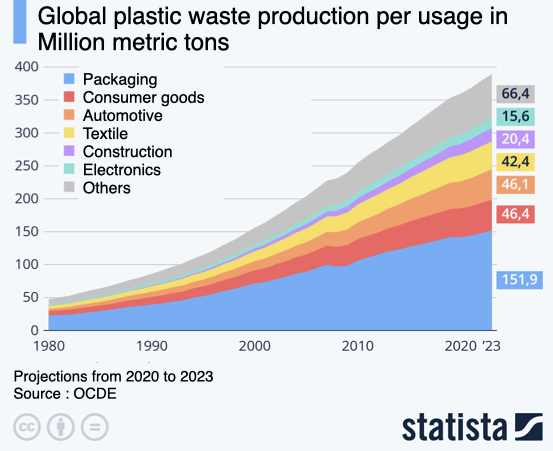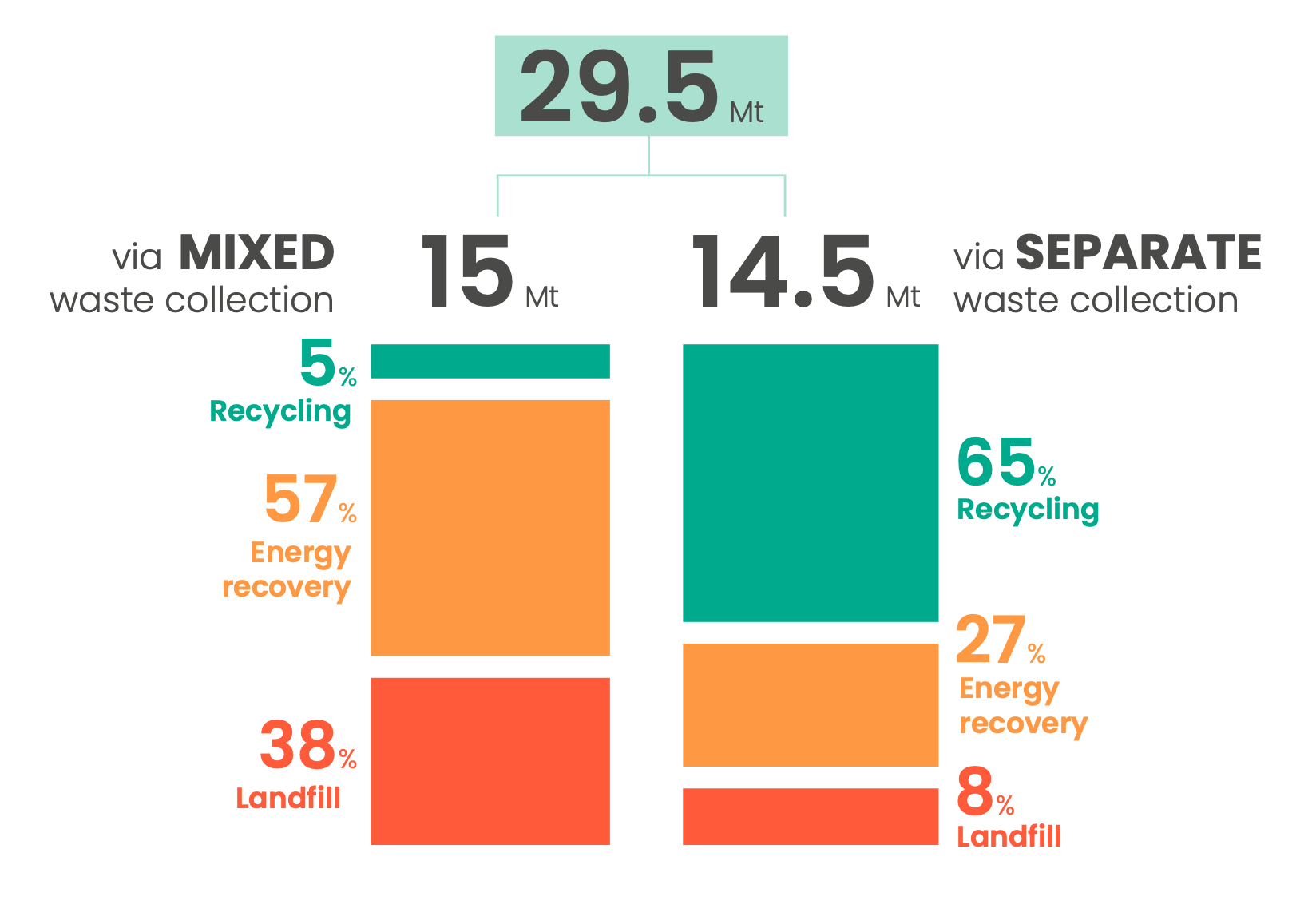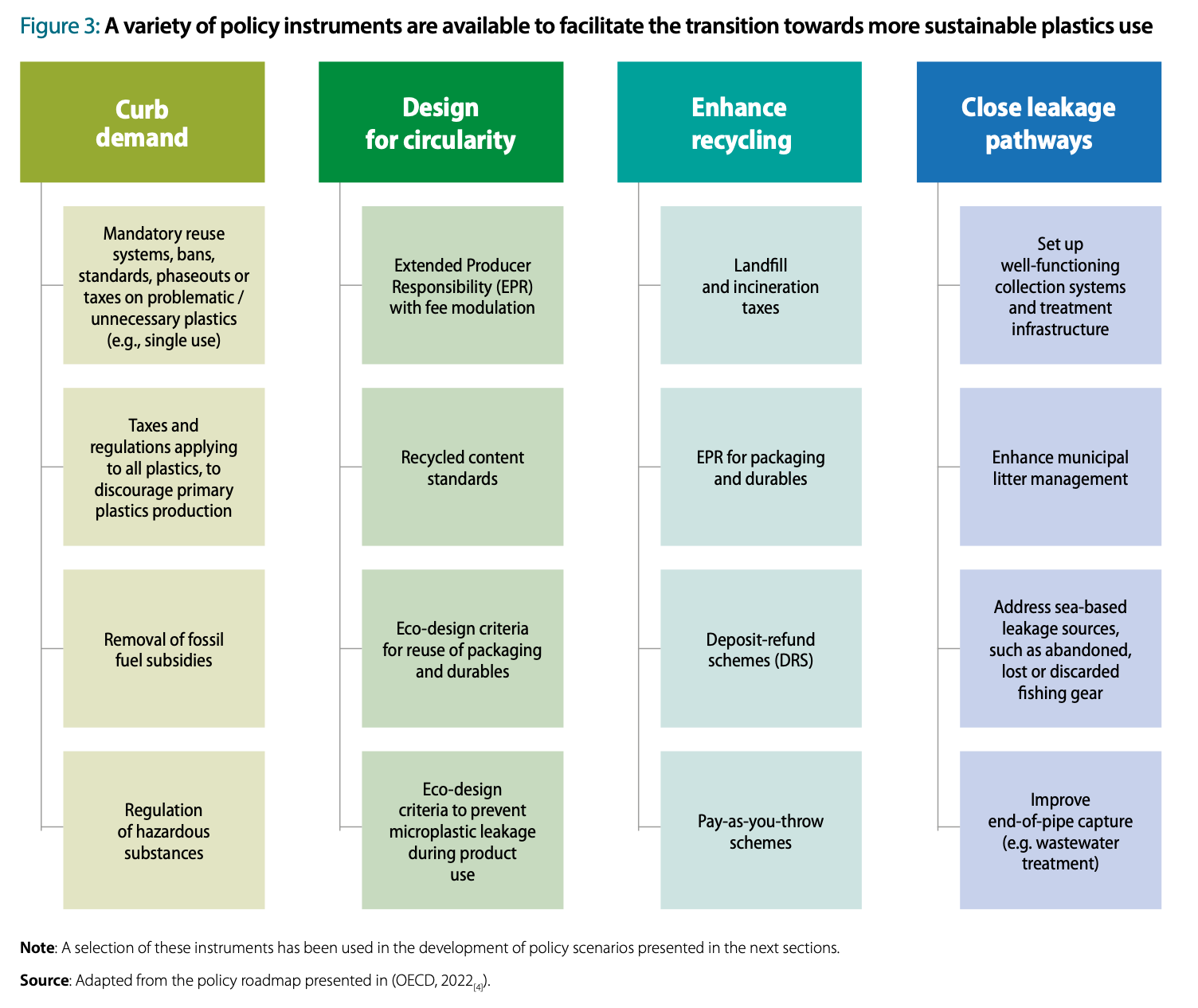In 1907, the first plastic based on a synthetic polymer appeared: bakelite, rigid and insulating, invented by Leo Baekeland, a Belgian-American chemist. In 1908, cellophane was born, flexible and transparent, and the number of inventions increased as plastic became more widespread. In the space of a century, plastic has invaded our lives and provided many services to medicine and mass production. So why is it such a big problem?
Why is plastic a problem?
No plastic is biodegradable!
Non-biodegradability: Plastics take hundreds of years to decompose, leading to a long-term accumulation of waste.
Remember the principle: biodegradation in two stages:
Bio-fragmentation → products form tiny pieces under the effect of the elements (water, sun, wind, etc.)
Bio-digestion → the small pieces (or fragments) are digested by soil micro-organisms to become basic elements again: water, CO2, methane and non-toxic residues.
Micro-organisms cannot digest plastic fragments.
Plastics can be toxic in use and for nature:
Plastics, even food plastics, release particles when heated and/or when they decompose, which can contaminate heated products and ecosystems and thus affect the food chain.
check this book →https://www.dargaud.com/bd-en-ligne/plastic-tac-tic-tac/11632/487ce125c8d7c66938230b5e3ccbbb9e
What is plastic pollution?
Panorama in figures :
390 million tonnes of plastics will be produced in 2022 (+4% yoy), of which only 8% will come from recycling and 1.5% from bio-plastics.
44% as packaging that rarely lasts more than a year.

In 2019, global plastic production and incineration emitted 850 million tonnes of greenhouse gases, or 3.4% of global greenhouse gases. The world produced the equivalent of 35,000 Eiffel Towers of plastic waste, i.e. 352 million tonnes (this has doubled in 20 years).
- 50% of this plastic is simply landfilled.
- 19% is burnt in incinerators
- 22% is thrown into the countryside, burnt in the open air or in unauthorised dumps
- → Only 9% is recycled
Over 40% of plastic is only used once, before being thrown away. 10 Plastic Facts
Estimates of the lifespan of plastic range from 450 years to infinity. 10 Facts Plastic
According to plastic producers, one of the main opportunities for improving processing is separate collection, because recovery costs are then lower and recycled plastic becomes more competitive. It is imperative to create incentives for the use of recycled plastic before the use of new materials.

As we have seen, plastics never really disappear, they can only end their life in a treatment centre. However, a third of all plastics end up in the environment, due to a lack of collection in many countries and the dumping of waste in unauthorised dumps or on the streets.
Cigarettes, which are so small, are the most common item of waste found on beaches, and alone pollute 500 litres of water. 23 million cigarette butts are thrown on the ground in France every year, and it is the cigarette that is most often abandoned in the natural environment.
How to get out of it?
On an individual basis: Replacing single-use plastics is essential
For example – the “plastic-free” kit:
For your shopping :
- Refuse plastic bags: carry in your pockets or hands or take your cloth bag everywhere.
- Think about your packaged purchases, could you avoid them?
- Buy in bulk – for example in Hamburg -> https://www.hamburg.de/unverpackt/)
- at the drugstores, opt for non-liquid or dissolvable products, which are sold in boxes or cardboard sachets.
- For food, opt for the market and cutting stalls where you can bring your own bag or container. Bring back the paper vegetable bags from one week to the next (the merchants will thank you too).
- For takeaway coffee – bring your thermos mug
- Thirsty? Water bottles save you hundreds of euros a year, because tap water is just as good as bottled water (yes, it is) – in stainless steel, glass or aluminium.
- Eating out?
- Bring your own container (here is a comparison of lunch boxes),
- Do you want delivery? There are also start-ups that help meal delivery companies to be more sustainable and offer containers for exchange.
- Plastic straws are already banned in France, but not outside Europe, so drink without a straw or take your own cup with you.
- The best thing to do is to eat on the spot or take cutlery with you
- Plastic gloves can be replaced by reusable gloves, latex gloves or other more durable alternatives.Les gants en plastique peuvent être remplacés par des gants réutilisables, des gants en latex ou d’autres alternatives plus durables.
Between friends/neighbours:
If you see packaging lying around, pick it up and put it in the containers provided for recycling.
Organising a collection around your home is an opportunity to talk about it and get some fresh air while contributing to everyone’s well-being – contact us if you need help.
at the level of global policies:
Governments (and in our case the European Union) have enormous power to change markets:

- by making the price of single-use plastic prohibitive and alternatives financially attractive
- by favouring recycling (by discouraging the use of new materials) and plastic for reusable items only.
- by avoiding sending our waste to other countries
- by supporting the introduction of waste collection in developing countries
At company level:
- There are many issues surrounding plastics :
- Taking responsibility for managing the externalities associated with the production and marketing of products containing plastics
- use recycled and recyclable packaging, and limit its quantity, especially if it has a short lifespan
- think about supply in terms of re-using existing materials rather than new ones
- consider ecodesign as part of product development, to integrate end-of-life treatment solutions into products at the design stage, with the potential to reuse them directly in production
- take into account the externalities of the product during production: energy requirements, transport,
- Awareness campaigns can help to change purchasing behaviour.
There is always hope, for example:
For Instance, the fabricating bioplastics:
- Making a bioplastic from potato starch. https://www.youtube.com/watch?v=_9LrdpKwGeg
- Bioplastic from milk https://www.youtube.com/watch?v=qSDc0fykIwQ
- Bioplastic from marine bacteria https://www.youtube.com/watch?v=THVJ94djTkU
Recycling
- Colombia and Ivory Coast https://www.youtube.com/watch?v=OWNA1CjIaIw
- Kenya: https://www.youtube.com/watch?v=iFcPqXxAUWM
- Indonesia https://www.youtube.com/watch?v=87miAqWoLEs
The collection of abandoned plastic waste :
- in rivers https://everwave.de/en/
- in the sea: https://theoceancleanup.com/
- on beaches (french): https://www.futura-sciences.com/tech/actualites/robotique-beachbot-enfin-robot-ramasser-megots-plage-92762/#ia-et-detection-dimages-pour-identifier-les-megots
Sources
- Can we do away with plastics? https://www.youtube.com/watch?v=Um3-Pks58PQ
- Scenario for eliminating plastics by 2030 https://www.oecd.org/environment/plastics/Interim-Findings-Towards-Eliminating-Plastic-Pollution-by-2040-Policy-Scenario-Analysis.pdf
- 10 figures on the plastic problem: https://www.nationalgeographic.fr/le-plastique-en-10-chiffres
- Overview https://www.oecd.org/environment/plastics/
- Plastics producers website – global and European production
- https://legacy.plasticseurope.org/fr/about-plastics/what-are-plastics/how-plastics-are-made
- Plastics – the facts 2022
- https://plasticseurope.org/fr/wp-content/uploads/sites/2/2023/02/PE-PLASTICS-THE-FACTS_FINAL_DIGITAL-1.pdf
- The journey of the city cigarette butt – https://youtu.be/fUEmT25kqEY
- Other sources of information https://mtaterre.fr/articles/pourquoi-le-plastique-a-envahi-nos-vies/
- https://www.capital.fr/entreprises-marches/plastique-pourquoi-les-industriels-en-utilisent-autant-1383866
- How plastics are made:
- https://www.futura-sciences.com/sciences/questions-reponses/chimie-fabrication-plastique-5-etapes-6227/
- How plastics are made: https://www.youtube.com/watch?v=ov3Y5ejVfqY
- Beware of lies about biosplastics – https://youtu.be/0ICDwM2inMY

Leave a Reply